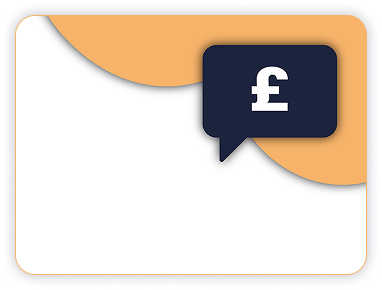

Every car in the UK is placed into one of 50 insurance groups. Group 1 cars are the cheapest to insure, while Group 50 cars are the most expensive.
Insurance companies use these groups to calculate your premium. The lower the group number, the less risk the insurer takes on, and the lower your insurance costs.
Factors that affect insurance groups include:
Engine size and performance - Smaller engines in lower groups
Repair costs - Cheaper parts mean lower groups
Security features - Better security can lower your group
Safety ratings - Safer cars often sit in lower groups
Value when new - More expensive cars usually sit in higher groups
Based on insurance group ratings and real-world premiums, here are the cheapest cars to insure right now:
Volkswagen Up! (Group 1-9) - Perfect city car with excellent reliability
Skoda Citigo (Group 1-6) - Essentially a rebadged VW Up! with similar low costs
Seat Mii (Group 1-6) - Another Up! variant with competitive insurance
Fiat Panda (Group 1-11) - Practical and cheap to run and insure
Hyundai i10 (Group 1-9) - Reliable Korean supermini
Kia Picanto (Group 1-7) - Great warranty and low insurance costs
Toyota Aygo (Group 1-9) - Ultra-reliable with low running costs
Citroen C1 (Group 1-10) - Same platform as Aygo with French styling
Peugeot 108 (Group 1-11) - Another Aygo cousin with low premiums
Vauxhall Corsa (Group 1-14) - Popular choice with good availability
These vehicles share several characteristics that keep insurance costs down:
Small engines - Most have engines of 1.0 to 1.2 litres, which are less powerful and therefore lower risk.
Low performance - They're not fast cars, which means they're statistically less likely to be involved in accidents.
Affordable parts - Common models with readily available parts mean repairs cost less.
Good safety features - Despite being budget cars, most include modern safety equipment like multiple airbags and stability control.
Less attractive to thieves - These aren't typically targeted by car thieves, reducing insurance risk.
On the flip side, certain cars will push your premiums up significantly:
Hot hatches - Ford Fiesta ST, Volkswagen Golf GTI, etc.
Sports cars - Mazda MX-5, BMW Z4, Porsche 911
Large SUVs - Range Rover, BMW X5, Audi Q7
Performance saloons - BMW M3, Audi RS4, Mercedes C63
Modified cars - Any modifications typically increase premiums
Choosing the right car is just the start. Here are more ways to reduce your premium:
Add a named driver - Adding an experienced driver with a clean record can sometimes reduce costs.
Increase your voluntary excess - A higher excess usually means lower premiums, but make sure you can afford to pay it if you need to claim.
Pay annually - Monthly payments often include interest charges.
Build your no-claims bonus - Each claim-free year reduces your premium.
Improve security - Parking in a garage or installing an approved alarm can help.
Limit your mileage - The fewer miles you drive, the lower your risk.
Consider telematics - Black box insurance monitors your driving and can significantly reduce costs for careful drivers.
Young drivers face the highest insurance costs, so choosing carefully is crucial. The Volkswagen Up!, Kia Picanto, and Hyundai i10 are all excellent choices with insurance groups starting from 1.
Similar to young drivers, new drivers need low insurance groups. The Fiat Panda and Toyota Aygo offer great value with good reliability records.
If you need more space but still want low insurance, consider the Skoda Fabia (Group 1-17) or Dacia Sandero (Group 2-11). Both offer practicality without high premiums.
Budget is often tight for first-time buyers. The Citroen C1 and Peugeot 108 are affordable to buy and insure, with good fuel economy too.
The difference between insuring a Group 1 car and a Group 20 car can be substantial:
Young driver (17-25) - Could save £500-£2,000 per year
New driver - Potential savings of £300-£1,500 per year
Experienced driver - Still could save £200-£800 per year
These are approximate figures - your actual savings depend on your personal circumstances, location, and driving history.
While insurance groups are important, they're not the only factor. Sometimes a higher group car might actually cost less to insure for you personally because:
The car has excellent safety features that your insurer values
It's less attractive to thieves in your area
Parts are readily available where you live
The model has a good claims history
This is why comparing quotes is essential - never assume a lower group automatically means cheaper insurance for you.
Before committing to a car purchase, always get insurance quotes first. Here's how:
Get the registration number - If buying used, get the exact reg from the seller
Use comparison sites - Get quotes from multiple insurers
Check the insurance group - Look up the specific model and engine size
Consider total running costs - Factor in tax, fuel, and maintenance too
Get quotes for alternatives - Compare several similar cars before deciding
Choosing one of the cheapest cars to insure can save you significant money, especially if you're a young or new driver. The Volkswagen Up!, Skoda Citigo, Hyundai i10, and Kia Picanto consistently rank among the most affordable to insure.
Remember to always compare insurance quotes before buying any car. The cheapest car to insure for one person might not be the cheapest for another due to individual circumstances like age, location, and driving history.
Choose wisely, and you'll enjoy affordable motoring with low insurance costs for years to come.

If you're shopping for a used car right now, you might have noticed prices creeping back up. After falling through much of 2024, used car values are on the rise again.

Learn about the rules and requirements for learning to drive with your parents. Find out what you need to know before getting behind the wheel with a family member.

If you've been driving claim-free for a few years, you've probably built up a valuable no claims bonus (NCB). Should you pay extra to protect it? Let's look at what protection offers and whether it's worth the cost.